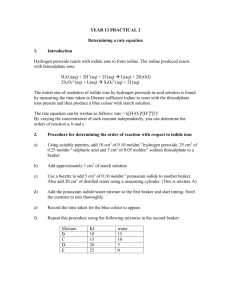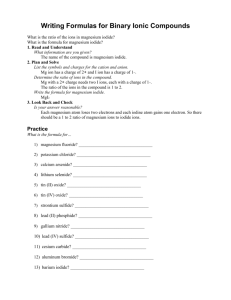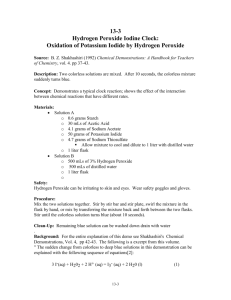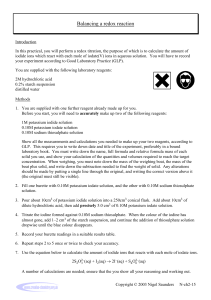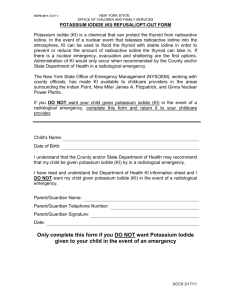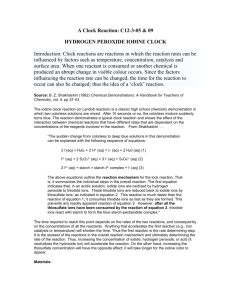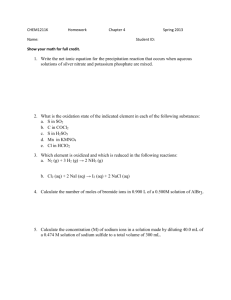Year 13 ISA Exercise 1 - A
advertisement
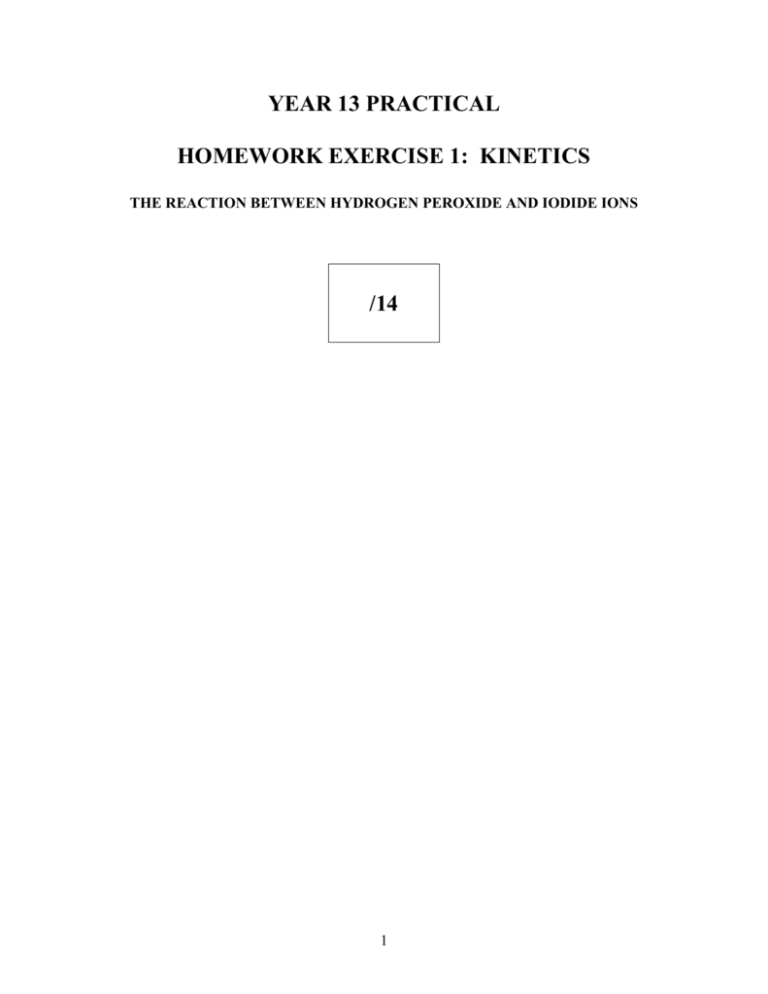
YEAR 13 PRACTICAL HOMEWORK EXERCISE 1: KINETICS THE REACTION BETWEEN HYDROGEN PEROXIDE AND IODIDE IONS /14 1 The reaction between hydrogen peroxide and iodide ions Introduction In aqueous solution and in the presence of dilute sulphuric acid, hydrogen peroxide reacts with iodide ions to form iodine according to the following equation: H2O2 (aq) + 2H+ (aq) + 2I-(aq) → I2 (aq) + 2H2O (l) Sodium thiosulphate solution and starch solution are added to an acidified mixture if hydrogen peroxide and potassium iodide. The initial rate of this reaction is investigated by measuring the time taken to liberate sufficient iodine to react with the thiosulphate ions present and then produce a blue colour with starch solution. A series of experiments is carried out in which the concentration of iodide ions is varied while keeping the concentrations of all of the other reagents the same. In each experiment the time taken for the reaction mixture to turn blue is recorded. The results obtained are used to determine the order of the reaction with respect to iodide ions. The rate of reaction can be represented as (1/time) and the concentration of the iodide ions can be represented by the volume of potassium iodide solution used. A graph of log10(1/time) on the y axis against log10(volume of KI) is a straight line with a gradient equal to the order of the reaction with respect to iodide ions. A set of results is given below. The volume of potassium iodide solutions were measured using a measuring cylinder. The times taken for the mixture to turn blue were recorded on a stopclock graduated in seconds. 2 Expt Volume of KI /cm3 Log10(Vol of KI) Time/s Log10(1/time) 1 5 0.70 68 -1.83 2 8 0.90 45 -1.65 3 10 1.00 36 -1.56 4 15 1.18 25 -1.40 5 20 1.30 22 -1.34 6 25 1.40 16 -1.20 Analysis 1. Use the results in the table to plot a graph of log10(1/time) on the y-axis against log10(volume of KI). Draw a straight line of best fit on the graph, ignoring any anomalous results. 3 4 2. Determine the gradient of the graph. ……………………………………………………………………………………… ……………………………………………………………………………………… ……………………………………………………………………………………… 3. Assume that the maximum errors for the apparatus used in the experiment are measuring cylinder ± 0.5 cm3 clock ± 1 second Calculate the maximum percentage error using each piece of apparatus in experiment 3. Hence calculate the maximum overall percentage error in experiment 3. ……………………………………………………………………………………… ……………………………………………………………………………………… ……………………………………………………………………………………… Evaluation 1. Consider your graph and comment on the results obtained from the investigation. Is your line of best fit good enough for you to deduce an order with confidence? Identify any anomalous results. ……………………………………………………………………………………… ……………………………………………………………………………………… ……………………………………………………………………………………… ……………………………………………………………………………………… 5 2. State two ways in which the method of performing this experiment could be improved, other than repeating the experiments. In each case explain why the accuracy of the experiment would be improved. Improvement 1 ……………………………………………………………………………………… ……………………………………………………………………………………… Explanation ……………………………………………………………………………………… ……………………………………………………………………………………… Improvement 2 ……………………………………………………………………………………… ……………………………………………………………………………………… Explanation ……………………………………………………………………………………… ……………………………………………………………………………………… 6
